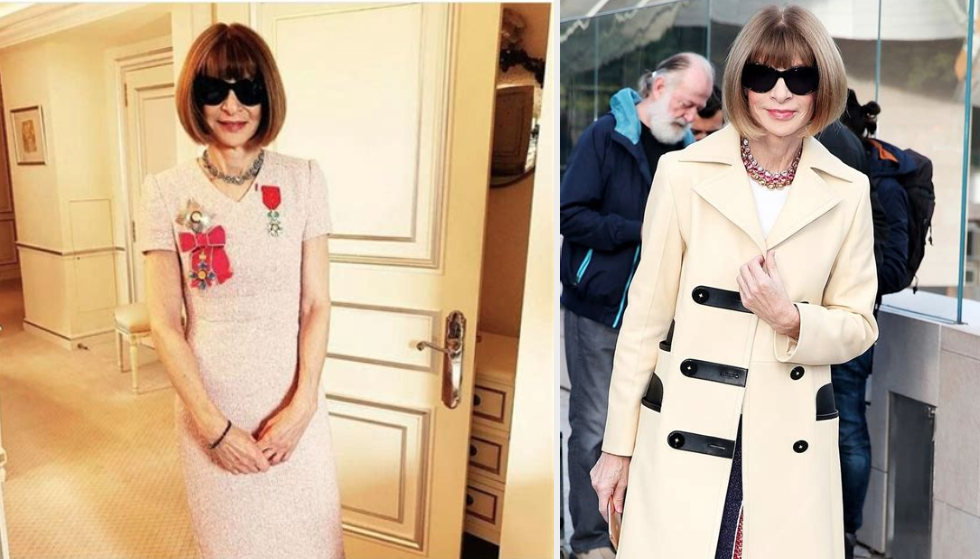Contents
Summary
Anna Wintour, editor-in-chief of American Vogue and the chief content officer of Condé Nast, is widely regarded as the most influential figure in fashion. Wintour has built Vogue into a powerful commercial juggernaut, boasting over 12 million readers in print. With a keen eye for talent and an innovative approach to fashion journalism, she has reshaped the fashion magazine’s identity with celebrity culture, urban design aesthetics and championing burgeoning designers. Today, US Vogue is populated by a coterie of fashion photographers, editors and designers that provide the magazine with a consistent visual aesthetic; many of whom have been supported and nurtured by Wintour.
Biography
Anna Wintour is a British-American journalist and editor best known as the long-serving Editor-in-Chief of Vogue and the Chief Content Officer of Condé Nast. Born on 3 November 1949 in London, England, she was exposed to the world of publishing from an early age, as her father, Charles Wintour, was the editor of the Evening Standard. She attended North London Collegiate School but left formal education to pursue a career in fashion journalism. Her sharp eye for trends and signature bob haircut soon became defining features of her personal and professional identity.
Wintour’s career in fashion journalism began in the 1970s when she worked for Harper’s in London. She later moved to New York, where she took on roles at Harper’s Bazaar, Viva, and New York magazine. In 1983, she joined Vogue as its Creative Director, and five years later, she was appointed as Editor-in-Chief. Under her leadership, Vogue transformed into the most influential fashion magazine globally, setting trends and shaping the industry. Her innovative approach included featuring celebrities on covers instead of just models, blending high fashion with accessible style.
Beyond Vogue, Wintour’s influence expanded as she became the Artistic Director of Condé Nast in 2013, later assuming the role of Chief Content Officer. She played a significant role in major fashion events, including the Met Gala, which she helped turn into one of the most prestigious fundraising events in the industry. Her collaborations with designers, photographers, and celebrities further solidified her status as a leading figure in fashion. Despite her success, she has often been depicted as a demanding and enigmatic leader, a portrayal famously reflected in The Devil Wears Prada, a novel and film inspired by her persona.
Wintour has also contributed to philanthropic causes, supporting emerging designers through the CFDA/Vogue Fashion Fund and championing diversity in fashion. She has used her platform to promote sustainability and social issues within the industry. Recognised for her contributions, she was appointed Dame Commander of the Order of the British Empire in 2017 for her services to journalism and fashion. And, again, in 2025. Anna Wintour was made Companion of Honour by King Charles III during a ceremony at Buckingham Palace, for her services to fashion including her fundraising work for important causes.
Even after decades in the industry, Anna Wintour remains a dominant force in fashion journalism. Her keen sense of style, strategic vision, and authoritative leadership continue to shape the global fashion landscape. While some may view her as an uncompromising figure, her impact on the fashion world is undeniable. With her unwavering dedication to excellence, Wintour’s legacy as one of the most powerful figures in fashion publishing is firmly established.
Milestones in Anna Wintour’s Professional Life At Vogue
Anna Wintour, editor-in-chief of American Vogue and the chief content officer of Condé Nast, is widely regarded as the most influential figure in fashion. Wintour has built Vogue into a powerful commercial juggernaut, boasting over 12 million readers in print. With a keen eye for talent and an innovative approach to fashion journalism, she has reshaped the fashion magazine’s identity with celebrity culture, urban design aesthetics and championing burgeoning designers. Today, US Vogue is populated by a coterie of fashion photographers, editors and designers that provide the magazine with a consistent visual aesthetic; many of whom have been supported and nurtured by Wintour.
- Appointed Editor-in-Chief of American Vogue in 1988, bringing a fresh, bold vision to the fashion magazine. Her leadership marked a shift in Vogue’s editorial direction, combining luxury fashion with street style.
- Revamped Vogue’s Aesthetic since the late 1980s by introducing a mix of luxury and accessible fashion in editorial spreads, revolutionising how fashion was presented. Her first Vogue cover in November 1988 featured a mix of designer and casual pieces, setting a new standard.
- Introduced the High-Low Fashion Concept, influencing how real women dressed and how brands marketed their collections.
- Under her leadership, Vogue became a global fashion authority, launching international editions and strengthening Condé Nast’s dominance in the fashion industry.
- She championed young designers such as Marc Jacobs, John Galliano, and Alexander McQueen, helping them gain international recognition. She also propelled the careers of supermodels like Naomi Campbell and Kate Moss.
- Wintour took charge of the Met Gala, turning it into the most prestigious fashion event, with exclusive guest lists and extravagant themes that set global trends.
- She oversaw the magazine’s transition into the digital era, expanding Vogue’s online presence, social media influence, and video content strategy.
- In addition to leading Vogue, Wintour was appointed Artistic Director for Condé Nast, overseeing the creative direction of multiple publications under the media giant.
- Inspired The Devil Wears Prada (2003, 2006). The book and film, based on former assistant Lauren Weisberger’s experiences, made Wintour a cultural icon. Meryl Streep’s character, Miranda Priestly, was widely believed to be modeled after her.
- Wintour was honoured with the title of Dame Commander of the Order of the British Empire in 2025.
Awards and Recognition
Anna Wintour is widely recognised as one of the most influential figures in the fashion industry. As the Editor-in-Chief of Vogue since 1988 and the Chief Content Officer of Condé Nast, she has played a pivotal role in shaping global fashion trends. Her keen eye for talent, innovative editorial direction, and support for emerging designers have cemented her reputation as a powerful force in fashion journalism. Wintour’s contributions extend beyond publishing, as she has been instrumental in fundraising for the Metropolitan Museum of Art’s Costume Institute.
Over the years, Wintour has received numerous accolades in recognition of her contributions to fashion and journalism. In 2008, she was appointed Dame Commander of the Order of the British Empire (DBE) by Queen Elizabeth II for her services to journalism and fashion. She has also been honoured with the Outstanding Achievement Award at the British Fashion Awards in 2014 and the Legion of Honour from France, acknowledging her global influence. Additionally, she received the CFDA’s Founders Award in 2018. In 2025, Anna Wintour was made Companion of Honour by King Charles III during a ceremony at Buckingham Palace, for her services to fashion including her fundraising work for important causes.
References
- Naomi Campbell and Anna Wintour’s fashion week kickoff NY Mag
- Anna Wintour takes off her iconic sunglasses for meeting with King Charles CNN
- Melania Trump vs Anna Wintour: The secret war between America’s most powerful women Telegraph
- Anna Wintour Just Showed Up to Buckingham Palace Wearing a Royal Necklace With a Mysterious Past Marie Claire
- I will not stop working, Anna Wintour tells King BBC
- Michael J Fox, Bono and Anna Wintour awarded Medal of Freedom BBC
- Biden honours Wintour, Bono and Soros with Medal of Freedom BBC
- Anna Wintour Wikipedia
- “Obama supporter Anna Wintour reportedly considered for ambassadorial post by administration” Hollywood Reporter
- “Condé Nast Puts Anna Wintour in Charge of Magazines Worldwide”. The New York Times.
- “‘The September Issue’ turns sharp focus to inner workings of Vogue”. The Seattle Times.
- “A Scooterman’s Portfolio”. The Guardian. London.
- Dame Anna Wintour Receives Royal Honour at Buckingham Palace Jobaaj
- Anna Wintour elected honorary trustee. Met Museum
- “The Cameras Zoom In on Fashion’s Empress”. The New York Times.
- “The September Issue: Humanizing the Devil”. Time.
- “What lies beneath The Guardian.
- Anna Wintour vows to keep working as receives latest UK honour HT
- “Just a Couple of Eccentrics”. Time.
- “On TV: ‘Ugly Betty’ tackles the cruel fashion world with grace”.





